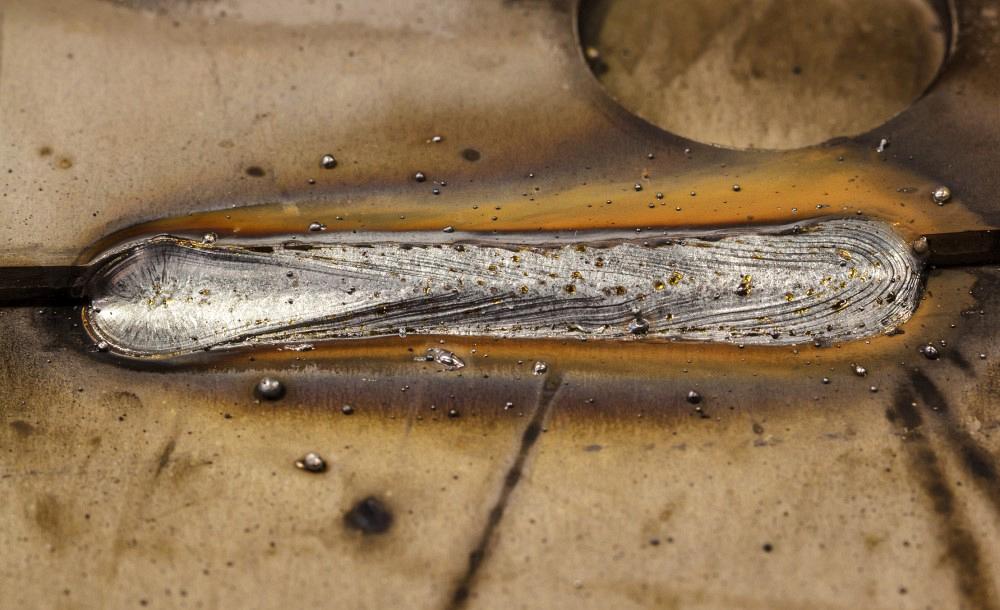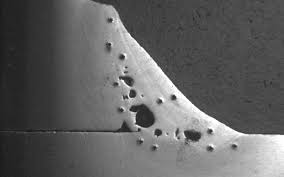The Scientific Research Behind Porosity: A Comprehensive Overview for Welders and Fabricators
Recognizing the intricate mechanisms behind porosity in welding is critical for welders and fabricators aiming for flawless workmanship. As metalworkers delve into the depths of this phenomenon, they discover a globe controlled by different factors that affect the formation of these small spaces within welds. From the composition of the base materials to the details of the welding procedure itself, a multitude of variables conspire to either worsen or reduce the presence of porosity. In this detailed overview, we will certainly untangle the science behind porosity, exploring its results on weld high quality and introduction advanced techniques for its control. Join us on this journey through the microcosm of welding imperfections, where accuracy satisfies understanding in the search of remarkable welds.
Comprehending Porosity in Welding
FIRST SENTENCE:
Assessment of porosity in welding reveals essential understandings into the honesty and quality of the weld joint. Porosity, identified by the existence of dental caries or gaps within the weld steel, is an usual issue in welding procedures. These spaces, otherwise properly attended to, can jeopardize the structural honesty and mechanical residential properties of the weld, bring about prospective failings in the finished item.

To detect and measure porosity, non-destructive testing approaches such as ultrasonic testing or X-ray evaluation are usually used. These techniques enable the identification of inner defects without jeopardizing the honesty of the weld. By assessing the dimension, form, and circulation of porosity within a weld, welders can make informed choices to enhance their welding procedures and achieve sounder weld joints.

Variables Influencing Porosity Formation
The event of porosity in welding is influenced by a myriad of elements, ranging from gas shielding efficiency to the intricacies of welding criterion settings. One important aspect contributing to porosity formation is insufficient gas protecting. When the securing gas, usually argon or carbon dioxide, is not successfully covering the weld pool, atmospheric gases like oxygen and nitrogen can infect the liquified metal, bring about porosity. Additionally, my blog the sanitation of the base products plays a substantial duty. Pollutants such as rust, oil, or moisture can evaporate during welding, developing gas pockets within the weld. Welding criteria, including voltage, current, take a trip rate, and electrode type, likewise influence porosity development. Using improper setups can produce extreme spatter or warm input, which subsequently can cause porosity. Moreover, the you could try here welding technique employed, such as gas metal arc welding (GMAW) or secured metal arc welding (SMAW), can affect porosity formation as a result of variants in heat distribution and gas insurance coverage. Comprehending and regulating these elements are essential for decreasing porosity in welding procedures.
Effects of Porosity on Weld Quality
Porosity development dramatically compromises the structural integrity and mechanical residential or commercial properties of bonded joints. When porosity exists in a weld, it creates spaces or tooth cavities within the product, minimizing the overall toughness of the joint. These voids act as anxiety focus factors, making the weld extra at risk to fracturing and failure under load. The visibility of porosity also compromises the weld's resistance to corrosion, as the caught air or gases within the voids can respond with the surrounding atmosphere, leading to deterioration gradually. In addition, porosity can hinder the weld's ability to stand up to stress or effect, additional threatening the overall high quality and integrity of the bonded structure. In important applications such as aerospace, automotive, or structural constructions, where security and his comment is here resilience are extremely important, the destructive effects of porosity on weld high quality can have extreme consequences, stressing the significance of minimizing porosity through correct welding strategies and treatments.
Strategies to Decrease Porosity
Additionally, using the proper welding specifications, such as the correct voltage, existing, and take a trip speed, is crucial in preventing porosity. Keeping a constant arc length and angle throughout welding also assists reduce the probability of porosity.

Using the suitable welding method, such as back-stepping or using a weaving movement, can additionally aid distribute warmth evenly and minimize the possibilities of porosity development. By implementing these strategies, welders can successfully minimize porosity and produce top quality bonded joints.

Advanced Solutions for Porosity Control
Carrying out innovative innovations and cutting-edge techniques plays a critical function in attaining premium control over porosity in welding procedures. Furthermore, using advanced welding techniques such as pulsed MIG welding or modified environment welding can additionally help alleviate porosity concerns.
An additional advanced option entails using sophisticated welding devices. As an example, making use of equipment with built-in features like waveform control and sophisticated power resources can boost weld quality and reduce porosity threats. The application of automated welding systems with accurate control over specifications can dramatically minimize porosity flaws.
In addition, integrating advanced monitoring and inspection technologies such as real-time X-ray imaging or automated ultrasonic screening can aid in finding porosity early in the welding process, enabling instant corrective actions. On the whole, incorporating these innovative solutions can greatly boost porosity control and enhance the overall high quality of welded elements.
Verdict
In final thought, understanding the scientific research behind porosity in welding is important for welders and fabricators to produce premium welds - What is Porosity. Advanced remedies for porosity control can additionally improve the welding procedure and guarantee a solid and trusted weld.